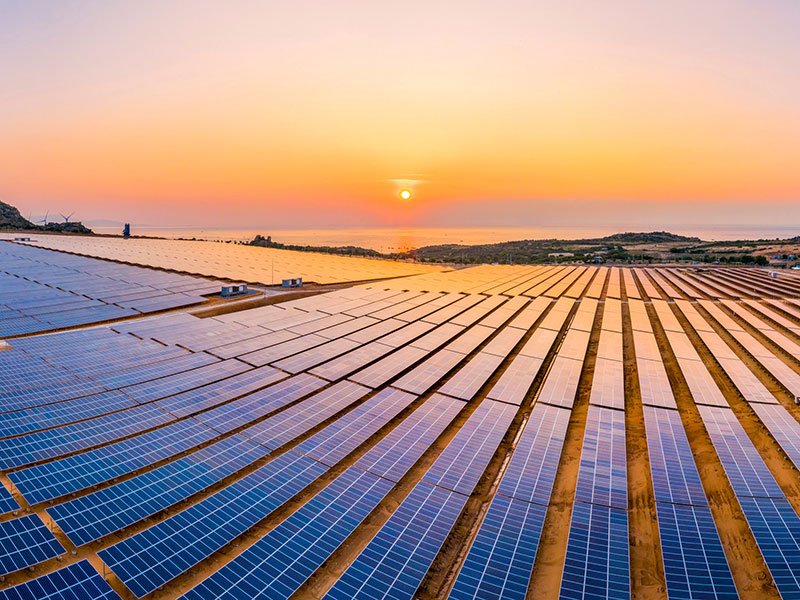Australia can use its potential as a renewable energy superpower to drive production of ‘green’ iron, aluminium and ammonia for export, but will need $60 billion to $100 billion in public investment over 20 years to get these new industries started.
A new Centre for Policy Development report says government should focus on pursuing a primary goal of exporting energy intensive commodities, rather that other industrial goals, such as processing critical minerals or onshore components manufacturing.
Modelling in the ‘Green gold: A strategy to kick-start Australia’s renewable industry future’ says funding would need to be front-end loaded with $20 billion over the forward estimates.
Other significant policy interventions would also be need to bridge the gap between fossil fuel’s “grey discount” and the renewables’ “green premium.”
As a secondary benefit of such investment, the Commonwealth could have a bigger impact on global emissions than all domestic decarbonisation combined – and secure future export-facing industries in the process.

This tailored focus on green export industries like low-emission iron, aluminium and ammonia would help to achieve the government’s economic goals, as well as its domestic energy policy goals and climate policy goals.
While noting that industry policy in Australia has largely agnostic about the direction of structural transformation – avoiding ‘picking winners’ – the CPD says there is plenty of evidence now justify intervention because global markets are incomplete and distorted.
Global commodity markets don’t adequately price-in externalities like the costs of carbon emissions, and nor do they factor in global wave of regulations that will limit carbon emissions
“The most efficient industrial structure determined by today’s commodity markets will not be the most efficient structure for tomorrow’s markets. This has led to intensifying intervention from governments around the world,” the report said.
Other countries are making big bets on their green industries – including the Inflation Reduction Act in the US and the European Union’s Green Deal Industrial Plan.
“These subsidies are de-risking projects and attracting significant investment capital to their respective jurisdictions,” the report said. “Whether you view this as distorting the global market or compensating for market incompleteness is merely a matter of perspective.”
“Either way, to become a world-leading exporter of clean energy and related inputs and products, Australia will need to respond quickly and ambitiously.”
“It is not enough to assume that once the technologies are mature the industries will migrate to Australia where sun is plentiful.
“The important investments in establishing new green industries are large and lumpy; for example, multi-billion-dollar plants for processing ore. These will be built where the business model – including government subsidies and support – makes the most sense.”
The Centre for Policy Development says the decarbonisation of Australia’s domestic energy systems is a challenge and is not currently accelerating fast enough to meet future needs.
But the Green gold report suggests that this decarbonisation could be achieved more easily alongside the development of the new green export industries.
It argues that the massive energy needs of the new industries would mean renewables would be built and firmed for industry at a scale that would make coal or gas energy production uneconomic for domestic consumption.
The report’s author, Centre for Policy Development sustainable economy director Toby Phillips, said ambition and swift action was needed to convert the economic opportunities presented by global energy transition.
“Australia is famously well-positioned to become an industrial powerhouse in the post-carbon economy thanks to our abundant natural resources, our unmatched potential for renewable energy generation, our highly skilled workforce, our stable institutions and our world-class research and development,” Mr Phillips said.
“Transforming these advantages into a leadership position requires us to take strategic, decisive and well-designed action that will create new export industries, support living standards, mitigate climate change and make our economy resilient and prosperous in the post-carbon era.
“By carefully selecting the right industries for the right investment at this crucial time, we can lock in future industries and make an important dint in global emissions, putting Australia at the head of the pack for industrial and economic leadership over the coming decades.”
Do you know more? Contact James Riley via Email.


This article told me precisely nothing. Does anyone really think Australia will take the ‘strategic, decisive and well-designed action’ that is suggested as the key to success? Of course not, but why not? Now that would make a useful analysis.